-
Strategy
-
In-House vs. Agency for Your Website Redesign
You’ve probably been here before.
The team’s huddled in a conference room (or Zoom call), tossing around the big question: “Should we just do the website ourselves or hire a website redesign agency?” It sounds simple, but this decision can shape your website redesign’s success for years.
The budget’s tight, leadership wants it done yesterday, and everyone’s secretly hoping for something award-worthy. The juggling act is balancing cost, speed, and quality without dropping the ball.
And you’re not alone. In recent years, more companies have been bringing creative and marketing work in-house. Marketing in house and in house marketing involves internal marketing teams or house marketing teams managing marketing activities and marketing initiatives directly, rather than relying on external agencies. This means that all marketing activity, from planning to execution, is handled by the company’s own staff.
According to ANA, in-house teams now handle over 61% of creative work for U.S. brands.
At the same time, specialized agencies continue to grow, especially in web design, where expertise and bandwidth can make or break a launch.
The truth? There’s no one-size-fits-all answer.
In-house teams and agencies each bring unique strengths to the table. Internal marketing teams and marketing teams can have more control over each marketing activity, but may face challenges with scale or accessing specialized expertise.
The right choice depends on your goals, your team’s capabilities, and how much you’re willing (or able) to invest in doing it right.
In todays article, we'll be diving into exactly what decision making process you should deploy to figure out which path is the right one for you. Let's get into it.
What’s at Stake in a Website Redesign
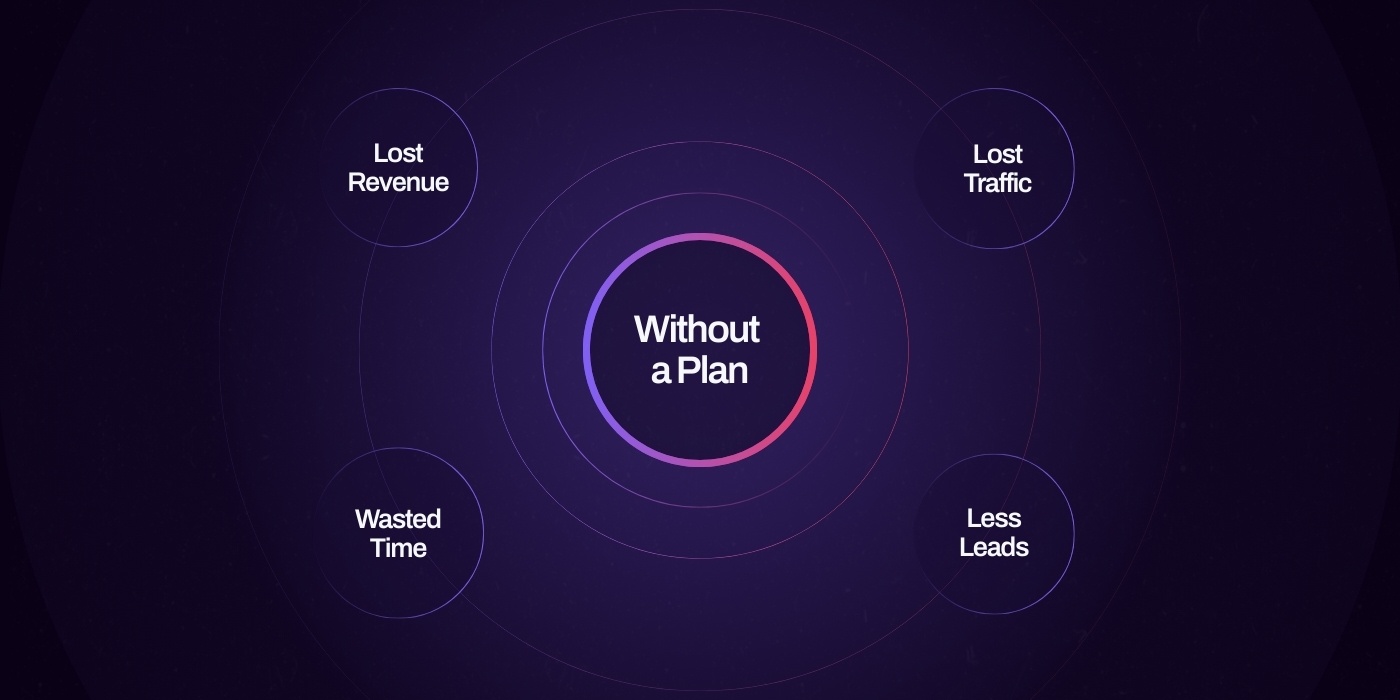
A website redesign is not just a “fresh coat of paint.”
It is a high-stakes business move that directly impacts your ability to generate revenue, maintain search visibility, and reinforce your brand’s position in the market.
Going in without a tight website redesign project plan can lead to the complications below.
Revenue Impact
Your website is often the first and sometimes the only place a potential customer interacts with your brand. '
A poorly planned redesign can tank conversion rates overnight.
For example, if your current site generates 1,000 leads a month and your redesign drops that by just 10%, that is 100 fewer opportunities every month.
Over a year, that can mean hundreds of thousands in lost revenue.
CRO platforms like Hotjar or FullStory can help you identify high-performing elements before you touch a pixel so you do not accidentally remove something that drives sales.
SEO Consequences
Your site communicates your value before your sales team says a word. If the new design feels outdated, inconsistent, or off-brand, you risk signaling that your company is behind the curve.
For a B2B SaaS provider, that can mean losing credibility with enterprise buyers before they even read your case studies.
High-quality, on-brand photography and consistent UI patterns across every touchpoint help reinforce trust from the first click.
The Cost of Getting it Wrong
A misaligned redesign is more than just a missed opportunity. It creates active drag on your growth. Lost traffic from SEO missteps.
Higher bounce rates because you buried the “Request a Demo” button. Sales teams spending months explaining confusing messaging. And the sunk cost of the redesign itself, which for mid-market companies often runs into six figures.
Execution Must Match Business Priorities
Whether you choose in-house or agency execution, the approach has to match your company’s goals and constraints.
If speed-to-market is critical because you are launching a new product, you may need a team with the resources to parallel-path design and development.
If brand perception is your Achilles’ heel, you need strategic creative direction that goes beyond templated layouts. Misalignment here can undo the best intentions.
Protip: Before you commit to a redesign plan, run a “no-regrets” audit. Map your highest revenue-driving pages, your top SEO performers, and your most important brand messaging. Protect these assets at all costs during the redesign. A tool like Google Analytics’ Landing Pages report combined with Ahrefs’ Top Pages export can give you the short list you need.
Understanding the Two Models
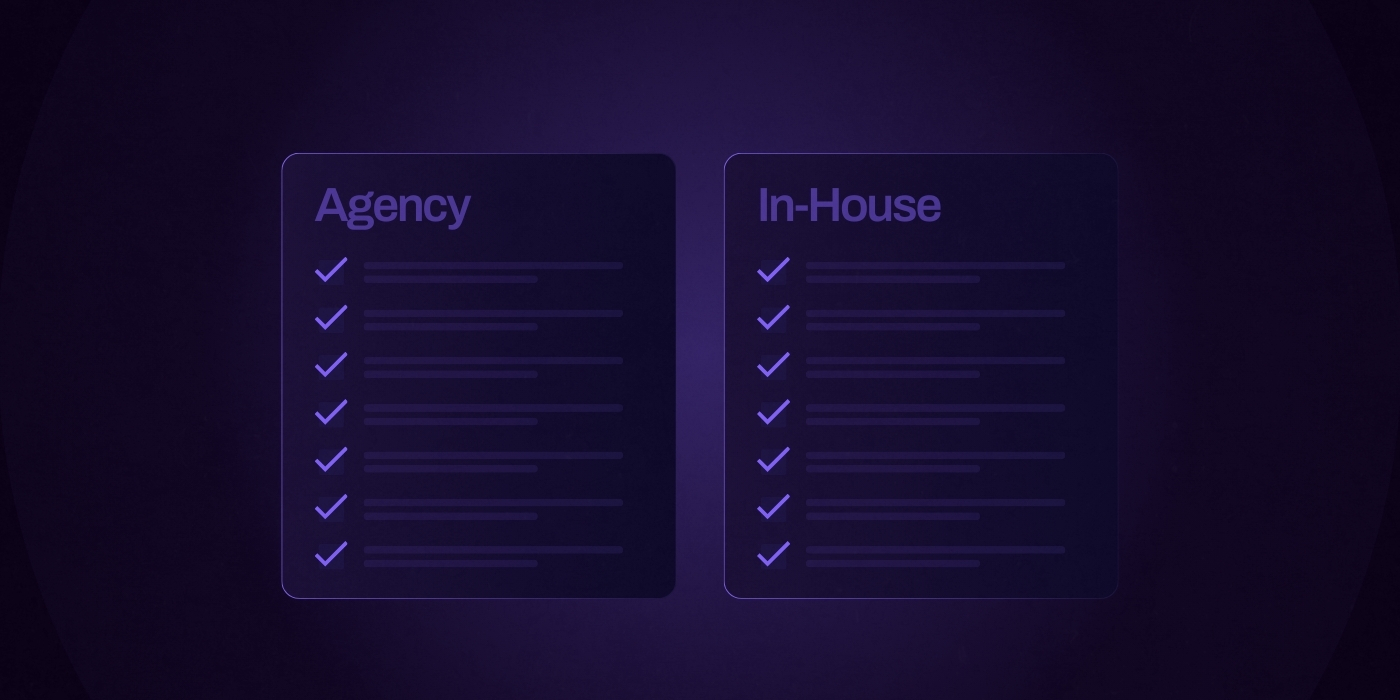
Before you can decide which path is right for your website redesign, you need a clear picture of what each option actually looks like in practice.
Most companies think they know the difference between in-house and agency support, but the reality is more nuanced when you start looking at the makeup, workflows, and strategic strengths of each model.
An in house marketing team is responsible for managing internal marketing operations and marketing efforts, providing direct oversight and control over campaigns, while a marketing agency typically brings specialized expertise and external support for a wide range of marketing strategies.
Internal marketing teams oversee day-to-day marketing operations, whereas agencies may offer a broader array of marketing strategies and scalable solutions.
Internal Marketing Team (In-House Team)
An in-house team is made up of employees who work directly for your company, typically sitting under the marketing or digital department.
In house marketing involves your own employees managing all marketing activities internally, from team building and defining roles to executing campaigns and projects. They’re embedded in your business culture, understand your brand voice intimately, and are often pulled into projects outside their core role because “you’re already here and know the brand.”
Working in house exposes employees to a variety of marketing roles, which helps them understand the overall marketing process and supports career development.
A typical in-house website redesign team includes:
- UI/UX Designer: Creates page layouts, brand visuals, and user interface elements. Depending on budget, you might have a single designer juggling UX and UI or separate specialists for each.
- Graphic Designer: A key member of the creative team, responsible for producing visual content that supports branding and advertising efforts, ensuring brand consistency across all materials.
- Developer: Handles coding, CMS setup, and integrations. This may be one person covering both front-end and back-end in smaller teams. Larger in-house setups might also employ a DevOps engineer for deployment and performance optimization.
- Project Manager: Keeps the redesign process on schedule and aligned with stakeholders’ expectations. Often, this person wears multiple hats, handling vendor communications and budget tracking as well.
- Marketing Support: Could be a content strategist, SEO specialist, or digital marketing manager ensuring the new site is optimized for conversions and visibility from day one.
- Creative Team: An essential part of in-house marketing, the creative team works closely together to maintain brand consistency, produce high-quality content, and develop a deep understanding of the brand.
Because in-house resources are usually limited, tools like Figma (for collaborative design), ClickUp (for task management), and Loom (for async feedback) help maximize efficiency. However, your project’s success often depends on whether the existing team can realistically take on such a large initiative while still managing their day-to-day responsibilities.
Marketing Agencies (Agency Partner)
An agency partner is an external team brought in to plan, design, and develop your new website.
They operate like a fully stocked toolbox, you get specialized skills and the bandwidth to move fast without the hiring overhead. Digital marketing agencies work with multiple clients across various industries, offering a broad range of specialized expertise and specialized knowledge that can be difficult to maintain in-house.
Agencies live and breathe project-based work, so they come to the table with a refined process, vetted tools, and an outside perspective that can identify gaps your internal team might miss.
There are three main types of agencies you might encounter:
- Boutique Agencies: Small, highly focused teams that typically specialize in one or two services. They’re often deeply involved with each client and can offer a very personalized approach. For example, a boutique UX agency might spend weeks running in-depth usability tests using tools like Hotjar or Maze before writing a single line of code.
- Full-Service Agencies: Larger operations that cover everything from branding and marketing campaigns to website builds. They can be useful if you want a one-stop shop, but their depth in web-specific expertise can vary, so vet their portfolio carefully. Marketing agencies and digital marketing agencies often employ account managers to provide personalized service and act as the main point of contact for clients.
- Specialized Agencies: Firms that focus exclusively on websites and related services like conversion optimization or technical SEO. A specialized agency might have an entire QA team dedicated to accessibility compliance, testing against WCAG 2.2 guidelines using tools like axe DevTools.
Unlike in-house teams, agencies often employ multiple layers of quality control and have the ability to pull in niche experts: think motion designers for microinteractions or database engineers for complex integrations, exactly when you need them.
Working with a client focused agency ensures you receive dedicated attention, while clear communication with external partners is essential for smooth collaboration and successful outcomes.
Protip: If you’re leaning toward an agency, ask to see not just their portfolio but also a sample project plan with timelines and milestones. This will reveal how organized they are and whether their process can integrate smoothly with your internal workflows. Keep in mind that agency work can be dynamic, as agencies serve multiple clients and adapt to different industries and project requirements.
Pros of Hiring In-House
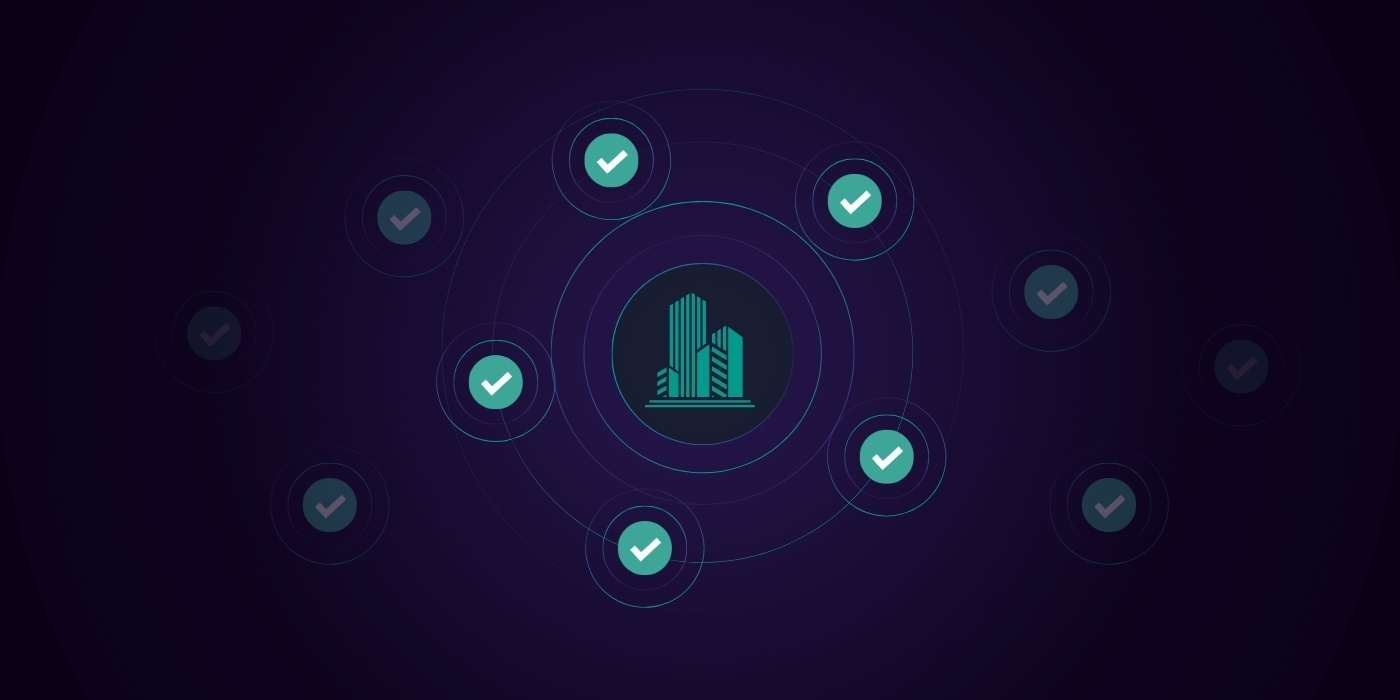
An in-house website team can be a powerful asset if your company has the right structure and resources to support it.
House marketing teams and in house marketing teams offer brand familiarity, a deeper understanding of your business, and complete control over marketing activities. Internal marketing teams can respond quickly and align closely with your company's values, but they may face challenges related to limited resources and higher employee costs compared to outsourcing.
Beyond the usual “they’re right there” talking point, there are strategic advantages that can pay off in both speed and quality.
Faster Collaboration and Accessibility
With in-house talent, feedback loops are almost instant.
You can walk over to a designer’s desk to tweak a homepage mockup or jump into a quick stand-up with your developer to troubleshoot a broken form. There’s no waiting for agency availability or scheduling around other client priorities.
Teams that use tools like Slack for instant communication and Figma for real-time design changes can iterate multiple times in a single day, which is invaluable when deadlines are tight or approvals are layered.
Deep Brand Knowledge
An in-house team lives and breathes your brand. They already understand your tone of voice, your customer base, and the unspoken preferences of leadership.
This means less time spent explaining why a certain shade of blue is non-negotiable or why a headline needs to strike a specific emotional chord. They’re immersed in your brand’s history, which can prevent costly missteps that stem from misunderstanding your identity.
Long-Term Strategic Alignment
Internal teams are not just executing a single project; they’re planning for the long haul. They can map your website redesign with your upcoming product launches, seasonal campaigns, or even shifts in your business model.
An internal marketing team can also ensure that these efforts are closely aligned with your overall business strategy, maintaining consistency and control across all campaigns and initiatives.
For example, if your marketing team plans to roll out a new service in six months, your in-house designer can structure the homepage so the new service gets prime visibility without requiring a full layout overhaul.
Tools like ClickUp can help keep these long-term roadmaps visible across departments.
Cultural Fit and Shared Values
In-house hires are selected not just for their skills but for how they mesh with your company culture.
They share your values, understand the office politics, and are invested in your mission. This alignment often results in smoother collaboration and higher motivation, especially during crunch times.
You’re not just another “account” in their workload, you’re their primary focus.
When In-House Excels
Imagine your marketing team is running a high-stakes product launch with a three-week runway. Especially internal marketing teams can excel in these situations due to their proximity and agility.
You need daily landing page updates, new promotional banners, and rapid A/B testing on calls-to-action.
An in-house team can push those updates live within hours, test variations using Google Optimize or Optimizely, and immediately review analytics with the marketing lead.
This level of integration and agility is hard to replicate with an external agency that’s balancing multiple client projects.
Protip: If you decide to build an in-house team, invest in cross-training your members on related skills. A designer who understands basic SEO or a developer who knows UX principles can help reduce bottlenecks and keep projects moving without waiting for specialized support.
Cons of Hiring In-House

While having a dedicated internal team can offer speed and alignment, it also comes with challenges that can limit your website redesign’s impact.
Limited resources and high employee costs can make it difficult for in-house teams to keep up with industry best practices and evolving marketing trends.
Understanding these downsides will help you assess whether the trade-offs are worth it.
High Fixed Costs
Salaries, benefits, hardware, software licenses, and ongoing training add up quickly.
These employee costs can be significant, especially for specialized roles. A skilled senior web developer can command over $100k annually before factoring in benefits, while enterprise-grade design tools like Adobe Creative Cloud, project management platforms like Clickup, and analytics suites like GA4 can easily add thousands per year in overhead.
These costs remain fixed regardless of how much active website work is being done, meaning you’re paying peak rates even during slower months.
Limited Skill Range
Most in-house teams are small, which means each member tends to specialize in only one or two areas.
You might have a stellar UI designer but no one experienced in advanced front-end animation, accessibility compliance, or server-side optimization.
In many cases, in-house teams may lack the specialized knowledge required for certain advanced or technical aspects of a website redesign.
This often leads to outsourcing niche tasks anyway, which can create budget bloat and timeline delays. For example, a team might need to bring in a freelancer for a WCAG 2.2 accessibility audit or a React developer to handle complex interactive components.
Risk of Turnover and Knowledge Loss
When a key team member leaves, they take institutional knowledge with them.
Everything from why certain design decisions were made to the quirks of your custom CMS configuration.
Without thorough documentation in tools like Confluence or Notion, new hires face a steep learning curve, which can slow progress and lead to mistakes. This is especially risky if your redesign project spans many months or is part of a multi-phase rollout.
Potential for Stale Ideas
An internal team, no matter how talented, works within the same environment every day.
Over time, this can lead to creative echo chambers where designs and strategies start feeling safe but outdated. Without regular exposure to new techniques, user behaviors, and competitive trends, you risk launching a site that looks current today but feels dated within a year.
Bringing in external consultants or agencies can provide fresh perspectives that challenge existing assumptions and inspire new ideas.
External input, like usability testing with fresh audiences via UserTesting, is often needed to break this cycle.
Protip: If you rely on an in-house team, schedule regular external audits with a trusted consultant or specialized agency. Even a quarterly review can inject fresh ideas, validate your approach, and catch blind spots before they become costly redesigns.
Pros of Hiring an Agency

Partnering with an agency can give your website redesign a level of depth, speed, and innovation that’s difficult to replicate in-house.
One significant advantage is that agencies offer extensive marketing experience and effective marketing strategies, which can help increase brand awareness and drive business growth.
The right agency brings specialized skills, proven processes, and an outside lens that can challenge assumptions and push your brand forward.
Access to Multidisciplinary Expertise
Agencies are built to cover every angle of a web project. Their specialized expertise allows them to tackle complex challenges efficiently. Y
ou’re not just getting a designer or a developer, you’re tapping into UX researchers, SEO strategists, content creators, motion designers, QA testers, and analytics pros.
This means you can tackle projects that require diverse skill sets without needing to recruit multiple full-time hires.
For example, an agency might run a Hotjar heatmap study, build high-fidelity Figma prototypes, optimize performance using Lighthouse, and then launch on a headless CMS like Sanity or Contentful, all with internal specialists for each step.
Cutting-Edge Tools and Processes
Top-tier agencies invest heavily in tools and workflows because they’re spread across multiple client projects. That means you get access to enterprise-level platforms like BrowserStack for cross-device testing, Webflow Enterprise for rapid prototyping, or Ahrefs for in-depth SEO analysis without shouldering the licensing costs yourself.
Agencies often have a suite of marketing tools that help manage campaigns, track ROI, and improve overall marketing effectiveness.
Agencies also refine their processes constantly. Think sprint-based delivery, automated regression testing, and built-in accessibility checks, so your project benefits from years of optimization.
Scalability
If your project scope changes midstream, agencies can scale resources up or down quickly.
Need to add a new interactive feature that requires a React specialist? They can pull someone in without derailing the timeline.
Once the heavy lifting is done, you can reduce engagement to a maintenance retainer rather than carrying full-time salaries. This elasticity is especially valuable for businesses whose website needs fluctuate seasonally or are tied to campaign cycles.
Fresh, Outside Perspective
Agencies work across industries, so they see what’s working in other spaces and adapt it for your audience.
They’re also less likely to be constrained by internal politics or “how we’ve always done things.”
That outsider vantage point can lead to creative leaps that would be harder to generate internally, like rethinking your entire navigation structure to mirror the conversion funnel instead of a traditional product-first approach.
When Agencies Excel
Picture a SaaS company planning a large-scale redesign to integrate a complex pricing calculator, multi-language support, and advanced analytics tracking.
An in-house team might struggle to cover all these specialized needs, but an agency can assemble a project squad with a React developer, a localization expert, a CRO strategist, and a data analyst who can set up Google Tag Manager event tracking from day one.
Agencies also bring web development expertise that may be difficult to source or maintain in-house, ensuring your online presence is both robust and scalable. The project benefits from parallel workflows, tight quality control, and a launch that’s ready for heavy traffic.
Protip: When evaluating agencies, ask them to walk you through a recent project from kickoff to launch. Pay attention to how they handled scope changes, stakeholder feedback, and post-launch optimization. This reveals far more than a polished portfolio ever will.
Cons of Hiring an Agency

Hiring an agency can give you firepower your in-house team can’t match, but it’s not without trade-offs.
Agencies work on multiple projects at once, and often juggle multiple clients, which can impact response times unless you have a dedicated account manager or work with a client focused agency.
Understanding these limitations will help you decide whether the value outweighs the constraints.
Less Immediate Availability
Agencies work on multiple projects at once, which means your requests are often slotted into pre-defined timelines. If you need a sudden change to a campaign landing page or a quick homepage swap for a breaking announcement, you might be waiting a few business days rather than a few hours.
Even with communication tools like ClickUp, the project has to flow through account managers, project managers, and resource scheduling.
This structure ensures quality but can be frustrating if you’re used to walking over to your in-house designer’s desk for instant changes.
Learning Curve on Brand Nuances
Agencies don’t live inside your brand’s day-to-day world, so they’ll need time to absorb your tone of voice, visual style, and cultural touchpoints.
Without a solid onboarding process (think brand guidelines in Notion), past campaign examples, and customer persona documents. This can lead to early deliverables that “look good” but miss subtle details.
For instance, a call-to-action that sounds bold to the agency might feel off-brand to your internal team if it doesn’t align with how your salespeople pitch in the field.
Perceived Higher Hourly Rate
At first glance, agency rates can look steep compared to a salaried employee’s hourly breakdown.
However, that rate includes the cost of specialized tools, QA processes, project management, and the fact that you’re paying only for the hours spent on your project. Not for sick days, downtime, or unrelated meetings.
For example, a $200/hour agency designer may deliver a landing page in 10 focused hours using Figma, Zeplin, and built-in component libraries, whereas an in-house designer juggling other responsibilities might take double that time.
The sticker shock fades when you calculate total cost against efficiency and expertise.
Protip: If you’re concerned about turnaround speed with an agency, negotiate a set number of “rapid response” hours in your contract. This ensures you have a guaranteed block of time each month for urgent updates without derailing the broader project schedule.
In House Vs Agency Costs
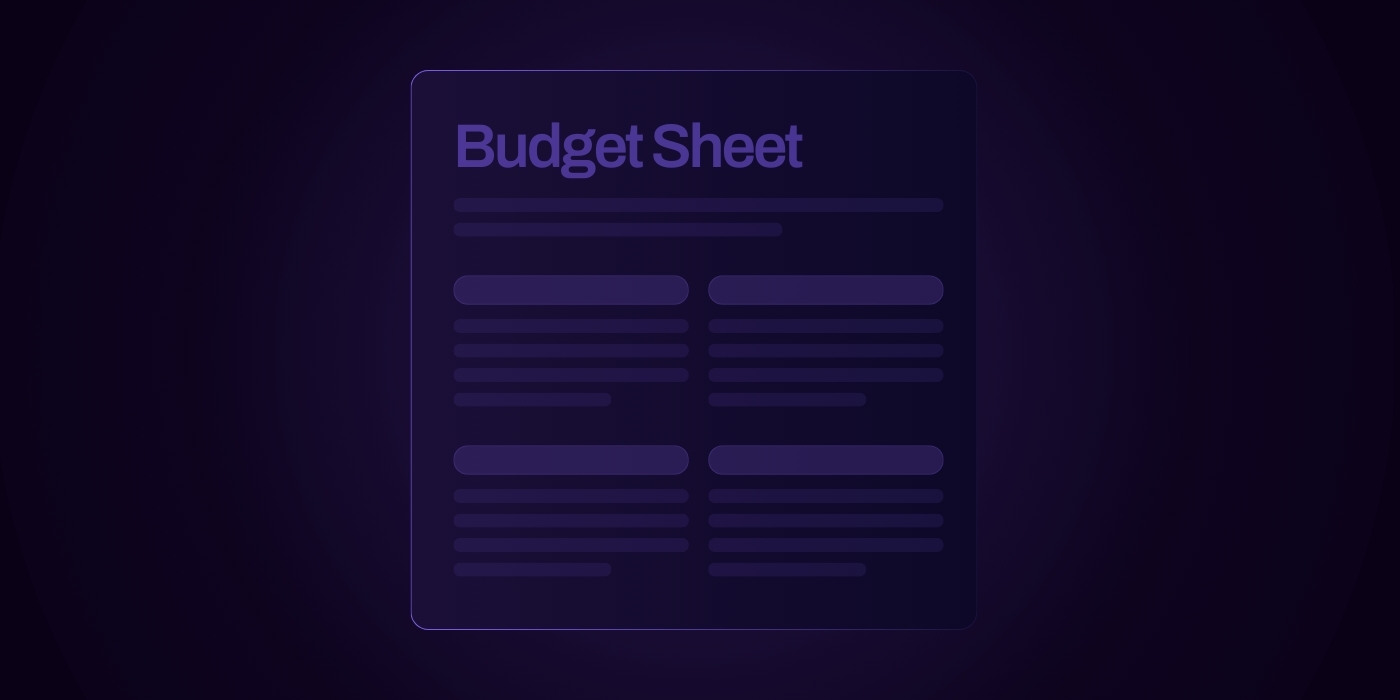
When comparing in-house and agency costs, it’s tempting to look only at salary vs. hourly rate.
The reality is far more complex.
True cost takes into account salaries, benefits, tools, training, and even hidden expenses like turnover or inefficiencies. Managing company data securely and efficiently is also an important consideration, and the amount of marketing required as a business grows, combined with limited resources in-house, can significantly affect the total cost of each model.
Agencies may appear more expensive on paper, but efficiency gains and bundled expertise can narrow or even reverse the gap.
In-House Costs
An in-house web team’s price tag starts with salaries. According to recent U.S. market data:
- Senior Web Designer: $85,000–$110,000/year
- Front-End Developer: $95,000–$125,000/year
- Project Manager: $75,000–$95,000/year
- Marketing Support/SEO Specialist: $65,000–$85,000/year
Add 25–30% for benefits, payroll taxes, and insurance.
Then factor in software like Adobe Creative Cloud, Figma, Asana, and Ahrefs, which can run $5,000–$10,000 per year.
Training budgets, hardware refreshes, and the risk of turnover, which can cost 50–75% of a role’s salary to replace, push the number even higher.
Agency Costs
Agencies typically bill in one of three ways:
- Hourly (often $150–$250/hour for senior talent)
- Fixed Project Rates (a mid-sized redesign might run $80,000–$150,000)
- Monthly Retainers ($5,000–$15,000/month for ongoing support)
At first glance, those rates seem high, but you’re only paying for active work.
You also get access to top-tier tools like BrowserStack, Lighthouse, UserTesting, and Contentful without carrying their licensing costs.
Because agencies have deep, specialized teams, they often deliver faster and with fewer revisions, which can offset the higher hourly rate.
Side-by-Side Example: 1-Year Cost for a Mid-Sized Redesign
| Fees | In House | Agency |
|---|---|---|
| Salaries (Combined) | $320,000 | N/A |
| Benefits & Payroll (28%) | $89,600 | N/A |
| Tools & Software (Avg) | $8,000 | N/A |
| Training (Avg) | $6,000 | N/A |
| Turnover Risk (10%) | $30,000 | N/A |
| Project Fee (1 Time) | N/A | $120,000 |
| Support Retainer (12 months) | N/A | $60,000 |
| Total Cost | $453,600 | $180,000 |
Protip: When running the numbers, calculate “cost per deliverable” instead of just annual totals. If an agency delivers a complete redesign in 4 months and your in-house team would take 8, that time savings translates directly into earlier ROI from your new site.
Website Cost Calculator
Curious what your project would cost with Huemor?
Our website cost calculator can provide you with an accurate, instant estimate on your project based on similar ones we've completed in the past.
When to Choose In-House

An in-house team is the right choice when your website is a living, breathing part of daily operations and requires constant hands-on attention.
Marketing in house with an internal marketing team allows for complete control over messaging and helps protect your brand's integrity.
If your digital presence is more like a newsroom than a static brochure, keeping the work inside your walls can be the smartest long-term play.
Ongoing, Iterative Changes
If your website consistently requires new product releases, frequent promotions, or continuous A/B testing, having in-house talent means you can push updates without waiting for an external team to slot you in.
For example, an e-commerce retailer running flash sales could have a designer swap hero banners in Figma, a developer push code via GitHub Actions, and a marketer update campaign URLs in Google Tag Manager all before lunch.
Heavy Integration with Internal Teams
When your website needs to work in lockstep with sales, customer success, and product teams, the proximity of in-house staff is invaluable.
A SaaS company integrating live usage data into the website dashboard might need daily collaboration between web developers and the product engineering team.
This type of cross-departmental work is easier to manage when everyone is on the same Slack channels and attending the same standups.
Need for Constant Availability
Certain industries can’t afford to wait hours for a fix.
In financial services, for example, a broken loan application form can cost thousands in missed revenue per hour.
An in-house developer on-call can diagnose the issue immediately using error monitoring tools like Sentry or New Relic, while an agency may need to assign the task and wait for the next availability window.
Specialized Industry Expertise That’s Hard to Train Externally
If your industry has unique compliance, technical, or customer experience requirements, it can be faster and safer to keep website development in-house.
A healthcare organization bound by HIPAA regulations might benefit from a web team that already knows the compliance landscape and can apply it instinctively in design and code.
While agencies can learn these requirements, there’s often a learning curve that in-house staff bypass entirely.
Protip: If you go in-house for these reasons, invest in creating a living “website operations playbook” in a tool like Notion or Confluence. This ensures that if team members leave, their processes, compliance knowledge, and integration workflows remain accessible and prevent costly knowledge gaps.
When to Choose an Agency

An agency can be the ideal partner when your website needs a high-impact transformation without the overhead of building and maintaining a full internal team.
One significant advantage of working with an agency is their specialized expertise, which enables them to help you achieve your marketing goals and critically refine your marketing plans for better results.
The right agency brings the bench strength, structure, and perspective to execute complex projects efficiently and at a high standard.
One-Off or Infrequent Large-Scale Redesigns
If your organization redesigns its website every three to five years, it rarely makes sense to keep a full in-house build team idle between projects.
Agencies are built for project-based work and can spin up the right talent mix immediately.
For example, a manufacturing company revamping a 1,200-page product catalog site could hire an agency to handle information architecture, CMS migration, and design system creation in parallel, something that would take an internal team months to staff and coordinate.
Lack of Internal Capacity or Management Bandwidth
Even if you have talented in-house people, they’re likely juggling day-to-day priorities.
Adding a redesign to their workload can lead to missed deadlines, burnout, or lower-quality output.
Agencies bring not only the talent but also project managers, QA leads, and technical directors to run the build without pulling your internal team off critical work.
Need for Innovation and Outside Perspective
If your site is starting to feel dated or too similar to competitors, an agency can break you out of the echo chamber.
They see what’s working across industries and can bring ideas your team might not think to try. For example, a B2B SaaS company might hire an agency that has just completed a high-converting storytelling-driven design for a retail brand, adapting the approach to make complex software features feel more approachable and engaging.
Protip: When hiring an agency for innovation, ask them to include “inspiration audits” as part of the process which should include curated examples of successful sites from outside your industry. This expands your creative range and helps you spot opportunities your competitors are missing.
The Hybrid Approach

For many companies, the choice isn’t strictly in-house or agency, it’s both.
A hybrid approach blends the deep brand knowledge and day-to-day availability of internal staff with the specialized skills and bandwidth of an agency.
This approach allows the marketing department to retain control over core marketing activities and strategic planning while leveraging external expertise for execution.
Done right, it can give you the best of both worlds without committing to the full cost of a large internal team or the dependency of a fully outsourced model.
How Companies Blend In-House Oversight with Agency Execution
In most hybrid setups, the in-house team serves as the strategic anchor.
They set priorities, maintain brand consistency, and manage internal stakeholder input. The agency handles execution-heavy tasks like UX research, design production, front-end and back-end development, or content creation.
This structure allows internal staff to focus on high-value decisions while the agency drives the build forward using their established processes and toolkits.
For example, the in-house marketing director might brief the agency using a shared Notion workspace, review Figma prototypes in real time, and approve development sprints via ClickUp.
Common Hybrid Models
In-House PM + Agency Delivery Team:
An internal project manager works directly with an agency’s account lead and delivery team. This keeps communication tight and ensures the agency’s output aligns with internal priorities.
In-House Creative + Agency Technical Team:
Internal designers handle the look and feel while the agency handles complex development work, such as integrating with ERP systems or building interactive product configurators.
In-House Content + Agency Design/UX:
The internal content team crafts messaging and SEO-optimized copy while the agency designs layouts, user flows, and interaction patterns. This model is common in industries where subject-matter expertise is hard to outsource.
Pros of the Hybrid Model
- Flexibility: Scale agency resources up or down without impacting full-time headcount.
- Speed with Control: Internal staff make quick decisions while agencies push execution forward in parallel.
- Specialized Skills on Demand: You can tap niche experts without adding permanent hires.
Cons of the Hybrid Model
- Coordination Overhead: More moving parts mean more opportunities for miscommunication, especially if workflows or tools aren’t aligned.
- Potential Role Confusion: Without clearly defined responsibilities, in-house and agency teams can duplicate work or step on each other’s toes.
- Dependency Risk: If too much critical knowledge sits with the agency, you could face delays or knowledge gaps when contracts change.
Protip: For a successful hybrid approach, invest in a single source of truth for project documentation whether it’s Notion, Confluence, or ClickUp, and make sure both teams actively update it. This ensures that institutional knowledge is shared, onboarding is faster, and you don’t lose momentum when team members change.
Questions to Ask Before Deciding In-House vs Agency

Choosing between in-house, agency, or a hybrid approach isn’t just about preference, it’s about aligning your decision with your budget, resources, and long-term business goals.
If you’re having trouble deciding, consider your unique business requirements and specific marketing needs to guide your choice.
Asking the right questions upfront will help you see past surface-level pros and cons and identify the model that truly fits your needs.
Budget: Can We Sustain Fixed Costs or Prefer Variable?
If you go in-house, you’re committing to fixed costs like salaries, benefits, and software regardless of workload. This can make sense if you have a high and steady volume of website work.
If your needs are cyclical, like seasonal campaigns or periodic redesigns, an agency’s variable project or retainer pricing can prevent budget waste.
For example, an industrial manufacturing company that updates its site heavily during annual trade show season but rarely the rest of the year might save significantly with an agency model.
Timeline: Do We Need Flexibility to Scale?
Large-scale redesigns often require a surge of talent for a few months, followed by a much smaller maintenance phase. Agencies can scale up or down quickly, bringing in multiple designers and developers at the start, then moving to a light retainer.
In-house teams can’t ramp as easily without hiring contractors or risking burnout. Using tools like Forecast or Resource Guru can help you map staffing needs against your timeline.
Skills: Do We Need More Than Just Design/Dev?
A successful redesign often requires more than beautiful visuals and functional code. You may need UX research, SEO strategy, analytics setup, accessibility compliance, and content creation.
Agencies have built-in multidisciplinary teams to cover these areas, while in-house teams might need to outsource specific skills anyway. For example, running a WCAG 2.2 audit with Accessibe is something many internal teams aren’t equipped to handle without outside help.
Control: How Important Is Day-to-Day Oversight?
If you need to review work daily, quickly shift priorities, or integrate changes with multiple departments, in-house offers more control. Agencies work within structured timelines and approval processes, which protect quality but can slow reaction times.
Ask yourself whether you value maximum autonomy or you’re comfortable with a guided, process-driven build.
Risk Tolerance: What’s the Impact if Someone Leaves?
Turnover hits in-house teams harder, especially if critical knowledge isn’t well documented. Losing your only full-stack developer mid-project can stall progress for weeks.
Agencies have built-in redundancy. If someone leaves, they swap in another qualified team member without disrupting delivery.
Regardless of the model, mitigate this risk with thorough documentation throughout the process.
Protip: Treat these questions like a scorecard. Rate each factor from 1 to 5 in terms of importance for your project. The resulting profile will often point clearly toward in-house, agency, or a hybrid setup before you even start talking to candidates.
Decision-Making Framework

Treat this like a product decision, not a coin flip.
Your choice should align with your overall marketing strategy, digital marketing strategy, business strategy, and the way you manage marketing operations. Use the steps below to determine scope, pressure test capacity, run the numbers, and choose a model that fits how your team really works.
1. Define Project Scope and Requirements
Create a short project brief that nails what success looks like and what it will take to get there.
- Business goals and KPIs: qualified demo requests, self-serve signups, pipeline value, time to first meaningful paint, accessibility scores. Track with GA4, Looker Studio, and Lighthouse.
- Functional requirements: headless CMS or not, multilingual, gated content, pricing calculators, integrations with Salesforce, HubSpot, Marketo, NetSuite, or custom APIs.
- Experience requirements: page types, component library needs, performance targets, WCAG 2.2 level, editorial workflow.
- Constraints: deadline, budget range, compliance, IT restrictions, security reviews.
- Outputs: sitemap, content inventory, integration list, acceptance criteria, “definition of done.”
- Tools: Notion or Confluence for the brief, Miro for IA, Figma for component planning, Screaming Frog for content inventory.
Example: A B2B SaaS company targets a 25% lift in demo requests within 120 days. They require WordPress, Salesforce, Marketo, WCAG AA, and a pricing estimator that syncs with the product team’s API.
2. Audit Current Internal Skills and Resources
Build a clear-eyed capacity and capability map.
- Skills matrix: list core workstreams across UX research, UI design, front end, back end, DevOps, SEO, analytics, copy, QA, accessibility. Rate 0 to 3 for proficiency and note owners.
- Capacity: gather real availability in hours per week for the next 12 weeks using Float or Resource Guru. Remove time for BAU tasks so the math is honest.
- Velocity and blockers: check Jira cycle time and open technical debt. Identify licenses, environments, and staging gaps.
- Documentation: verify you have brand guidelines, voice and tone, design tokens, and coding standards.
Example: Your designer has 12 hours a week, your developer is at 90% on product backlog, you have no dedicated QA, and no one can run aWCAG audit. That is a red flag for a pure in-house build.
3. Map Needs vs Availability
Turn the audit into a gap plan you can act on.
- Workstream estimate: break the scope into discovery, UX, UI, content, front end, back end, integrations, QA, analytics, launch, and post-launch. Use three-point estimates in Google Sheets to model best, likely, worst.
- Heatmap: compare required hours per workstream against real capacity. Anything in the red becomes a candidate for agency support.
- Ownership model: decide who leads each stream. Keep brand messaging and stakeholder management in-house. Consider agency ownership for high-skill or parallelizable streams like component system build, complex integrations, and a11y QA.
- Tools: Airtable for the matrix, Notion for RACI, Gantt in Smartsheet or Asana Timeline.
Example: Keep UX interviews and messaging internal. Hand off design system build, headless CMS implementation, and automated regression testing to an agency that uses Storybook, Contentful, and Playwright.
4. Run Cost‑Benefit Analysis
Calculate true total cost and time to value, not just sticker price.
- In-house TCO: salaries plus 28% burden, tools, training, hardware, and a turnover reserve. Add cost of delay using a simple formula: daily revenue impact from the old site multiplied by days until launch. Limited access to data or resources can significantly affect the efficiency and outcomes of your website redesign, leading to less optimal decisions and increased costs.
- Agency cost: discovery sprint plus fixed project fee or time and materials with rate cards, then a right-sized retainer. Include their built-in tools and QA that replace separate licenses.
- Efficiency factor: apply an efficiency multiplier for specialized teams that run parallel tracks. A seasoned agency can compress timelines by 20 to 40 percent because design, dev, and QA move together with established playbooks.
- Risk scoring: rate each option 1 to 5 across schedule risk, quality risk, and knowledge continuity. Multiply by impact. Add the result to your cost model to compare risk‑adjusted totals.
- Tools: a Google Sheets model with tabs for capacity, costs, and a Monte Carlo tab for schedule ranges if you want extra rigor.
Example: If your current site underperforms by an estimated $2,500 per day, cutting eight weeks off launch with an agency saves about $140,000 in delay costs. That alone can offset a higher hourly rate.
5. Choose Model and Engagement Structure
Pick the path that fits your gaps, then set up the right contract mechanics.
- In-house fits when updates are constant and cross‑team integration is heavy. Actions: hire to fill the skills matrix, formalize a design system in Figma with tokens, set up CI/CD with GitHub Actions, add Sentry and axe DevTools to the pipeline.
- Agency fits when the project is complex or timelines are tight. Start with a 2 to 4 week discovery sprint that delivers a brief, IA, wireframes, and a technical plan. Use fixed fee for tightly defined scope or time and materials with sprint caps when requirements are evolving. Include a monthly rapid response bucket for urgent changes.
- Hybrid fits when you want tight brand control with specialist firepower. Use an embedded pod model where the agency provides a lead engineer, a designer, and QA inside your Slack and Jira. Keep content and stakeholder management internal. Require repo ownership, shared Storybook, and a handoff playbook before launch.
Decision aid: Score each factor from the prior section 1 to 5 for importance and 1 to 5 for how well each model serves it. Multiply and sum. The highest total points you to in-house, agency, or hybrid. If two options are within 10 percent, run a short pilot to break the tie.
Protip: Before you commit fully, run a two‑week pilot with the chosen model. For in-house, ship one production page template and measure cycle time and defect rate. For an agency or hybrid, run a discovery sprint and one component through design, build, and QA using your actual stack. Real throughput data will confirm your decision faster than any proposal ever will.
Real-World Win: Agency-Led Redesign with Huemor
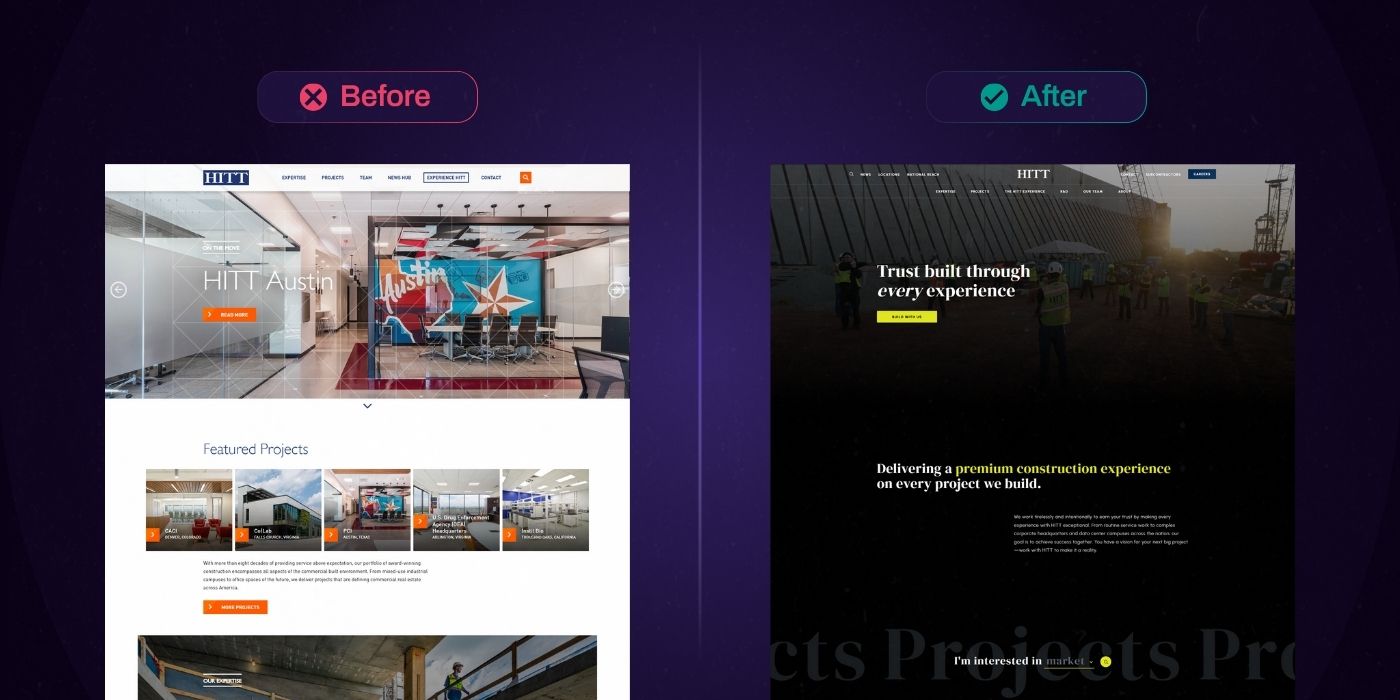
A national top-50 general contractor needed a website that matched the scale of their business and spoke to three distinct audiences: new business prospects, potential employees, and subcontractors.
Their existing site was eight years old, outdated in both design and functionality, and no longer served the needs of their current or future customers.
They put the project out for bid, fielding 20 RFP responses before narrowing down to five and ultimately selecting HUEMOR. As the client put it:
“Our company doesn’t want to look anything like our competitors, so we’ve intentionally chosen a web firm with zero history in the commercial construction industry. HUEMOR has truly seen where we can take the website and make it look significantly different from all of our competitors.”
The Process
Huemor’s engagement started with a discovery phase, identifying pain points, market opportunities, and best practices from outside the construction industry. From there:
- Mood boarding & wireframing to lock in structure and visual direction.
- High-fidelity designs in Figma, supported by InVision prototypes for collaboration.
- Development & functionality build, pushing the limits of CSS to deliver a standout interactive experience.
- Copywriting & SEO with keyword research, metadata optimization, and targeted content modeling.
- Ongoing maintenance for bug resolution, form performance monitoring, and content updates.
Project management was a finely tuned machine: ClickUp tickets for coding needs, shared Google Docs and Sheets for daily check-ins, and email for formal communication. The client noted:
“We’re a company of project managers, and we know that developing a website entails plenty of project management responsibilities. Given that, we’ve hired HUEMOR for their artistry… and their ability to understand our vision.”
The Results
Within just a week and a half of launch, the form fill rate was already climbing across all three audience segments. Over time, the numbers spoke loudly: a 228 % increase in qualified leads.
The client summed up their satisfaction simply:
“If you’re looking for a vendor with a unique perspective, then HUEMOR is the firm.”
Why It Worked
- Fresh industry perspective: By working with a firm outside their vertical, the contractor avoided the “cookie-cutter” look common in construction sites.
- Multi-disciplinary expertise: Design, dev, copywriting, and SEO were handled seamlessly under one roof.
Tight, transparent communication: Multiple channels and daily touchpoints kept the build aligned and on schedule.
This is a textbook example of where an agency’s process, creativity, and execution can outperform what most internal teams could deliver on their own—especially for large, high-stakes projects with ambitious performance goals.
Want the full case study? If you're interested in the full story, check out the full HITT case study here.
Your Website, Your Choice
Whether you build in-house, partner with an agency, or strike a hybrid balance, the right choice comes down to what your project demands and what your team can realistically deliver.
This isn’t about picking the “best” model in a vacuum—it’s about picking the best model for you.
In-house shines when your website needs constant iteration, deep integration with internal teams, and an on-call crew that knows your brand as well as you do.
Agencies excel when you need multidisciplinary firepower, faster timelines, and a fresh perspective that challenges the status quo.
Hybrid gives you the control of an internal lead with the execution muscle of an external team, but it requires clear roles and airtight communication.
You’ve seen the pros, the cons, the cost breakdowns, and real-world examples. You’ve got the questions to ask and a framework to follow. Now it’s about applying that lens to your own reality: your budget, your timeline, your skill gaps, and your appetite for risk.
Your website is too important to gamble on a hunch. Use the data, think through the trade-offs, and choose a path that gets you not just to launch day, but to a site that keeps driving results long after the ribbon-cutting.



